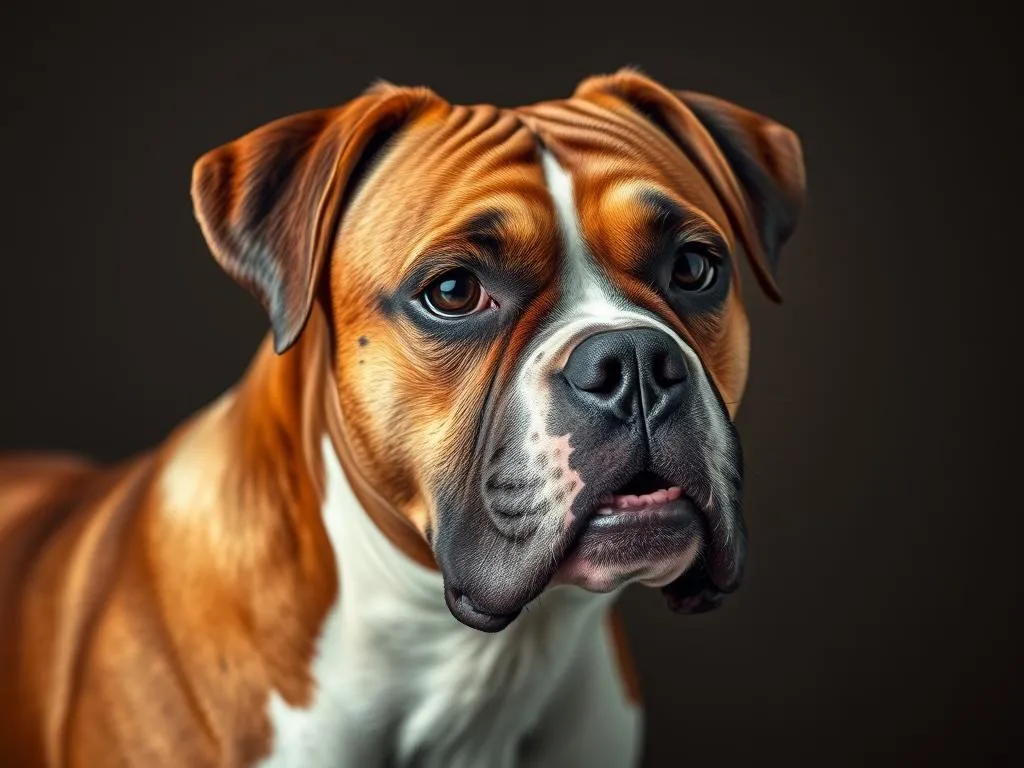
Introduction
Boxer dog breeds have captivated the hearts of dog lovers around the world with their playful demeanor and loyal nature. Originating in Germany in the late 19th century, Boxers were initially bred for hunting and guarding, showcasing a combination of strength and agility. Their unique blend of playfulness and protective instincts has made them one of the most popular dog breeds in many households.
Understanding the different Boxer dog breeds and colors is crucial for potential owners. The breed and color often influence their temperament and compatibility with various family dynamics. Whether you’re a first-time dog owner or looking to add another furry member to your family, knowing the ins and outs of Boxers can help you make an informed decision.
Understanding Boxer Dogs
History of the Boxer Breed
The Boxer breed has a rich history that traces back to Germany. Its ancestors include the now-extinct Bullenbeisser, which was used for hunting large game, and the English Bulldog. These breeds were crossed to create a dog that was not only strong and agile but also intelligent and trainable. The breed was officially recognized by the American Kennel Club (AKC) in 1904, and since then, Boxers have evolved into versatile family companions and working dogs.
Characteristics of Boxer Dogs
Boxer dogs are medium to large-sized canines characterized by a muscular build and a square jaw. Adult Boxers typically weigh between 50 to 80 pounds and stand about 21 to 25 inches tall at the shoulder. Their short coats are easy to maintain, making them a suitable choice for families who prefer low-maintenance pets.
In terms of temperament, Boxers are known for their high energy levels and playful nature. They are intelligent, eager to please, and highly trainable, which makes them perfect for active families. Their strong protective instincts also make them excellent watchdogs. Boxers are known for their affectionate and family-oriented nature, often forming strong bonds with their owners and children.
Types of Boxer Dog Breeds
Standard Boxer
The Standard Boxer is what most people envision when they think of the breed. These dogs possess a strong, athletic build and are known for their playful, energetic demeanor. They typically have a short coat that comes in various colors and patterns. However, the Standard Boxer is prone to certain health issues, including hip dysplasia and heart problems, so regular veterinary check-ups are essential.
Miniature Boxer
The Miniature Boxer is a smaller version of the Standard Boxer, typically weighing between 15 to 25 pounds and standing about 10 to 14 inches tall. Although they share many traits with their larger counterparts, Miniature Boxers are often mixed breeds, resulting from the crossing of a Standard Boxer with smaller breeds like the Boston Terrier or Pug. They maintain the playful nature and loyalty of Standard Boxers but may have different health concerns due to their mixed ancestry.
Other Variants and Crossbreeds
Boxers are often mixed with other breeds, leading to unique characteristics and temperaments. Some popular Boxer mixes include:
- Boxador: A mix between a Boxer and a Labrador Retriever, Boxadors are friendly, energetic, and great with families.
- Boxer Bulldog Mix: This mix combines the strength and loyalty of both breeds, often resulting in a dog that is affectionate and protective.
These crossbreeds may inherit the best traits from both parents, but prospective owners should be aware of the potential for varying health issues.
Boxer Dog Colors
Common Colors of Boxer Dogs
Boxer dogs are recognized for their striking colors, with Fawn and Brindle being the most common:
- Fawn: This color ranges from light tan to a deep gold. Fawn Boxers often have white markings on their face, chest, and paws. Their coat can vary in shade, making each dog unique.
- Brindle: Brindles are typically a mix of fawn and black stripes. This color pattern gives them a distinctive appearance, with the stripes creating a unique coat design.
- White: While less common, White Boxers are striking and beautiful. However, this color is often viewed as rare and is sometimes not accepted in breed standards due to potential health risks.
Rare Colors of Boxer Dogs
In addition to the common colors, some Boxer dog colors are considered rare:
- Reverse Brindle: This color features a predominantly dark coat with lighter stripes, the opposite of traditional brindle. Reverse Brindles are uncommon, making them particularly sought after.
- Black Boxers: Although entirely black Boxers can occur, they are not recognized by many breed standards. They are often the result of a genetic mutation and can face stigma in breeding circles.
Choosing the Right Boxer Dog
Factors to Consider
When selecting a Boxer dog, it’s crucial to consider your lifestyle. Boxers require plenty of exercise and mental stimulation. They thrive in active households and need space to run and play. Additionally, understanding your family dynamics is important, as Boxers are known to be good with children and can be playful and boisterous.
Finding a Reputable Breeder
Researching a reputable breeder is essential for ensuring the health and well-being of your new Boxer dog. Reputable breeders conduct health testing and provide documentation of lineage. Asking the following questions can help in your search:
- What health tests have been conducted on the parents?
- Can you provide references from previous puppy owners?
- What socialization practices do you implement with your puppies?
Care and Training for Boxer Dogs
Basic Care Requirements
Caring for a Boxer dog involves providing them with a balanced diet tailored to their age and activity level. High-quality dog food is essential for maintaining their health and energy levels. Grooming is relatively simple, as Boxers have short coats that require minimal maintenance. However, regular brushing can help reduce shedding.
Training and Socialization
Training and socialization are critical for Boxers. Early training helps channel their energy positively and sets the foundation for good behavior as they grow. Positive reinforcement techniques, such as treats and praise, are effective for Boxers, who respond well to encouragement. Socialization with other dogs and people should begin at an early age to help them develop into well-rounded adults.
Health Considerations for Boxer Dogs
Common Health Issues
Boxer dogs can be prone to specific genetic health issues, including:
- Hip Dysplasia: A condition where the hip joint doesn’t fit into the hip socket properly.
- Heart Conditions: Boxers can be susceptible to various heart diseases, including cardiomyopathy.
- Cancer: Boxers have a higher incidence of certain cancers, so regular vet check-ups are vital.
Regular Vet Checkups
Routine veterinary visits are crucial for maintaining a Boxer’s health. Regular screenings can catch potential health issues early, and vaccinations help protect against common canine diseases. Regular parasite prevention is also necessary to keep your Boxer healthy.
Conclusion
Understanding the various Boxer dog breeds and colors is essential for anyone considering adding this dynamic breed to their family. Boxers are loyal, energetic, and affectionate companions that thrive in active households. Whether you choose a Standard, Miniature, or mixed breed, knowing the characteristics of Boxers can help ensure a harmonious match with your lifestyle.
Responsible dog ownership includes being informed about breed-specific health issues, training needs, and care requirements. By choosing a Boxer, you’re not just gaining a pet; you’re welcoming a loving family member into your home.
FAQs
What’s the lifespan of a Boxer?
Boxers typically live between 10 to 12 years, but with proper care, some can live longer.
Are Boxers good with children?
Yes, Boxers are known for their affectionate nature and are usually great with children, making them ideal family pets.
How much exercise do Boxers need?
Boxers are active dogs that require at least 1 hour of exercise daily to stay healthy and happy. Regular playtime and walks are essential for their well-being.









